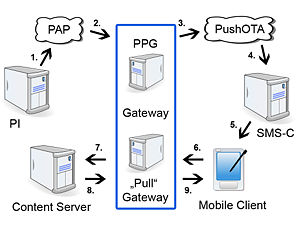This article includes a list of references, related reading, or external links, but its sources remain unclear because it lacks inline citations .(May 2009) |

A Push Proxy Gateway is a component of WAP Gateways that pushes URL notifications to mobile handsets. Notifications typically include MMS, email, IM, ringtone downloads, and new device firmware notifications. Most notifications will have an audible alert to the user of the device. The notification will typically be a text string with a URL link. Note that only a notification is pushed to the device; the device must do something with the notification in order to download or view the content associated with it.